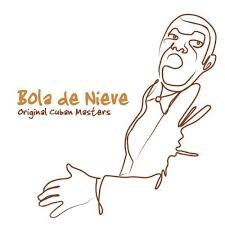 BOLA DE NIEVE, UN ARTISTA CUBANO QUE SE CASÓ CON LA MUSICA. VIDEOS.
BOLA DE NIEVE, UN ARTISTA CUBANO QUE SE CASÓ CON LA MUSICA. VIDEOS.
Ese corazón sonoro, esa alegría terrestre, fue siempre el signo que enarboló en el escenario aquel artista cubano que fue Ignacio Villa, conocido artísticamente como Bola de Nieve, a quien evocamos en su ya 49 aniversario de su desaparición física, acaecida en octubre de 1971.
La magia del arte de este popular pianista y cantante cubano residía en hacer suya cada canción que interpretaba, una identificación plena, y por ello, la decía con tanto gusto, expresividad y calidad que convirtieron ese acto supremo de cantar en naturaleza lírica.
Su nombre siempre estará indisolublemente ligado al de la magistral cantante Rita Montaner, quien lo presentó al mundo desde el escenario del Politeama en 1933. En ese momento, Bola de Nieve acompañaba a su amiga e intérprete en el piano. Ambos constituían un binomio perfecto con una vocación de rescatar la música cubana popular y la de los compositores más reconocidos.
Desde ese momento se volvería leyenda. Aunque estudió poco el piano, bebió de la sabiduría de los grandes exponentes de la nación caribeña: María Cervantes, Manuel Saumell e Ignacio Cervantes. Fue continuador de esa tradición cubana de decir, que añadido a su sensibilidad dio esplendor a un arte genuino que es portavoz de un sentimiento popular.
Y esa cimiente era popular porque su música era nacional, ya que según el escritor y etnólogo cubano Miguel Barnet: “expresaba un proceso donde se encontraba el abuelo negro y el abuelo blanco en una fusión feliz y germinativa, síntesis del modo de ser cubano”.
Bola de Nieve integró a su repertorio piezas extranjeras como ‘La vida en rosa’, de Edith Piaf, por ejemplo, que hizo exclamar a la cantante francesa que nadie cantaba su canción como el cubano, también sumó con fortuna canciones antológicas latinoamericanas como ‘La Flor de la canela’.
Quizá por ello, el eximio novelista cubano Alejo Carpentier, comentara: “Bola de Nieve nos pone a todos de acuerdo, evidentemente. Pero ha tenido, por encima de eso, el talento necesario para ponerse de acuerdo con todos los pueblos del mundo”.
Ese genuino arte fue calibrado por los más exigentes públicos de la época en el Carnegie Hall, el Café Society, el Hall de la Fama, el teatro Lara de Madrid, la boite Chez Florence, en Moscú, Pekín, Praga, Ciudad de México, entre otros.
Tal éxito se comprende porque Bola de Nieve encarna como ningún otro la idiosincrasia cubana. Al decir del compositor Harold Gramatges: “Con igual sabiduría maneja la canción caricaturesca, la de la serena elaboración renacentista, la de inflexiones folklóricas de cualquier país. Su auténtica musicalidad, su amplia cultura y una gracia sin medida hacen de él un personaje singular dentro del arte que cultiva. Así lo ha reconocido el público de América, Europa y Asia. Por eso es universal nuestro cubanísimo Bola”.
Además de ser un formidable intérprete, compuso memorables canciones como las inolvidables: ‘Si me pudieras querer’, ‘Ay, amor’ y ‘Drume mobila’ -cuya letra fue incluida en una antología de poesía cubana en 1939 por Juan Ramón Jiménez–; o ‘Tú me has de querer’ –grabada por Pedro Vargas en 1940.
“Bola de Nieve se casó con la música y vive con ella en esa intimidad de pianos y cascabeles, tirándose por la cabeza los teclados del cielo. ¡Viva su alegría terrestre! ¡Salud a su corazón sonoro!”, exclamó en una ocasión el gran poeta latinoamericano, Pablo Neruda.
Su voz personalísima, su espíritu simpático en un pieza o en otra su desgarradora ironía, su ronquera ancestral, su ritmo inusual, su elogiado pedal en el piano, hacen de este eximio artista un ser excepcional que transfiguraba todo en hermosura, en luz nueva.
 BOLA DE NIEVE, A CUBAN ARTIST WHO GOT MARRIED TO THE MUSIC. VIDEOS.
BOLA DE NIEVE, A CUBAN ARTIST WHO GOT MARRIED TO THE MUSIC. VIDEOS.
That sonorous heart, that earthly joy, was always the sign that Cuban artist Ignacio Villa, artistically known as Snowball, wore on stage, whom we evoke on the 49th anniversary of his physical disappearance, which occurred in October 1971.
The magic of the art of this popular Cuban pianist and singer lay in making each song he performed his own, a full identification, and for this reason, he said it with such taste, expressiveness, and quality that they turned that supreme act of singing into lyrical nature.
His name will always be inextricably linked to that of the masterful singer Rita Montaner, who introduced him to the world from the Politeama stage in 1933. At that time, Bola de Nieve accompanied her friend and interpreter on the piano. Both were a perfect pairing with a vocation to rescue popular Cuban music and that of the most recognized composers.
From that moment he would become a legend. Although he studied the piano little, he drank from the wisdom of the great exponents of the Caribbean nation: María Cervantes, Manuel Saumell, and Ignacio Cervantes. He was a continuator of that Cuban tradition of saying, which added to his sensitivity gave splendor to a genuine art that is the spokesperson for a popular feeling.
And that foundation was popular because his music was national, since according to the Cuban writer and ethnologist Miguel Barnet: “it expressed a process where the black grandfather and the white grandfather met in a happy and germinative fusion, synthesis of the Cuban way of being”.
Bola de Nieve integrated into his repertoire foreign pieces such as’ La Vida en rosa ‘, by Edith Piaf, for example, which made the French singer exclaim that no one sang her song like the Cuban, also, fortunately, added Latin American anthological songs such as’ La Cinnamon flower ‘.
Perhaps, for this reason, the distinguished Cuban novelist Alejo Carpentier commented: “Snowball puts us all in agreement, obviously. But he has had, above that, the talent necessary to reach an agreement with all the peoples of the world ”.
This genuine art was calibrated by the most demanding audiences of the time in the Carnegie Hall, the Café Society, the Hall of Fame, the Lara theater in Madrid, the Chez Florence nightclub, in Moscow, Beijing, Prague, Mexico City, among others.
Such success can be understood because Bola de Nieve embodies the Cuban idiosyncrasy like no other. In the words of the composer Harold Gramatges: “With equal wisdom, he handles the cartoonish song, that of the serene Renaissance elaboration, that of folkloric inflections of any country. His authentic musicality, his wide culture, and an unmeasured grace make him a unique character within the art he cultivates. This has been recognized by the public in America, Europe, and Asia. That is why our very Cuban Bola is universal ”.
In addition to being a formidable interpreter, he composed memorable songs such as the unforgettable ones: ‘If you could love me’, ‘Ay, amor’ and ‘Drume mobila’ – whose lyrics were included in an anthology of Cuban poetry in 1939 by Juan Ramón Jiménez -; or ‘You have to love me’ –recorded by Pedro Vargas in 1940.
“Bola de Nieve married music and lives with it in that intimacy of pianos and bells, throwing the keyboards of the sky over his head. Long live your earthly joy! Cheers to his sonorous heart! ”, The great Latin American poet Pablo Neruda once exclaimed.
His very personal voice, his sympathetic spirit in one piece or another, his heartbreaking irony, his ancestral hoarseness, his unusual rhythm, his praised pedal on the piano, make this distinguished artist an exceptional being who transfigured everything in beauty, with a new light.
Agencies/ Radio Enciclop/ Miguel Garcia/ Wiki/ Internet Photos/ YouTube/ Arnoldo Varona/ www.TheCubanHistory.com
THE CUBAN HISTORY, HOLLYWOOD.



 BOLA DE NIEVE, un artista Cubano que se casó con la Música. VIDEOS.
BOLA DE NIEVE, un artista Cubano que se casó con la Música. VIDEOS.








